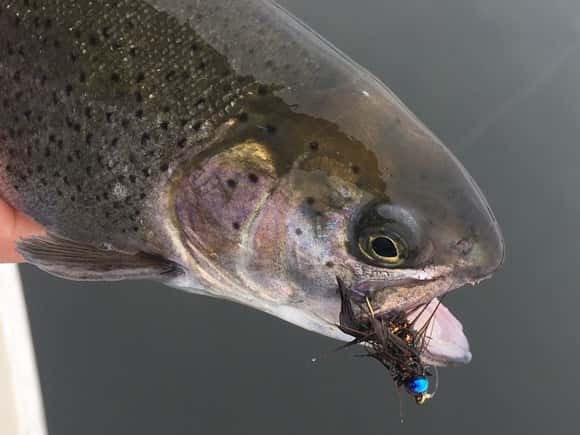
Our Outdoors: Close to Home
By Nick Simonson
Having great fishing and hunting close to home is vital to becoming a better angler and hunter, and we are lucky to have so many options – some which are well known, and some more secret – in our region. This week’s column celebrates the things those spaces teach us and the work that goes into them.
I’m not much for travel, even in the outdoors. Though it’s the safest way of getting from point A to point B, I sweat profusely while aboard just about any airplane, regardless of whether there’s fishing or hunting on the other side of the trip and often start dreading the flight back with three or four days to go in my vacation. While far more comfortable, there are few trips I make in the car for hunting or fishing that are more than an hour away, unless there’s a farmhouse or a cabin that serves as a makeshift basecamp at the end. A good deal of my adventures occur just minutes out my front door, and more than 90 percent of them within an hour’s drive.
From growing up on the Sheyenne River, fishing bullheads in the city park just half a block from the gravel driveway of my parents’ house to later living on the north end of Valley City, dropping my small boat in off the pavement chunk launch at Chautauqua Park in search of smallmouth and walleyes, my time on the water started close to home, and I was lucky to have that close-by opportunity to form my love of fishing. After moving to Minnesota, I discovered dozens of grouse trails within 20 minutes of town for the fall and lakes loaded with crappies just minutes from home for late-night ice fishing adventures. In the state’s southwest where I resided for almost a decade, nearly 40,000 acres of public land rolled out each fall and after the rush of opening weekend, they felt like they were mine alone to hunt for the rest of the season. Now, with the Missouri River and several dozen lakes within a quarter-tank’s reach of my current residence, there’s incredible opportunities – big and small – to explore.
It’s these waters close to home that are most important, whether they’re stocked trout lakes tucked into the hills, or walleye factories that span half a state; large swaths of federal land or the occasional WMA or WPA that plays hosts to grouse, pheasants, deer and other game, they provide a close by option, one that doesn’t require a lot of travel or time to get to know.
Maximizing these opportunities means getting to know a water or a stretch of land, and in the process learning the points where fish reside, birds will flush and deer will travel. So much can be learned on small local waters that transfers well to other places to be fished in the future. Many of the tactics learned on the rivers and lakes I grew up around have served as a base for those flows I became familiar with later in life. In turn, I continued to grow from each new local option and further hone my skills on the water, with each season making me a better angler whether I focused on walleyes, bass, panfish or trout.
While the landscape changed from prairie to forest to farmland to river breaks throughout the front half of my hunting experience, picking apart each adventure helped me discover the things that defined upland game at their core. Both pheasants and ruffed grouse love edges. For the former, it’s the breakline of grass between cattail slough and field and for the latter it’s a cut between young aspen and pine that holds them. I’ve looked at online maps prior to heading afield to pinpoint brush in grassy areas that may hold sharptails, simply based on the work I’ve put in on public-access places in prairie grouse country, further developing my understanding of those birds based on the bountiful options just a few miles from home.
These places, practically in my backyard wherever I’ve lived, have not only made me a better outdoorsman, but have also deepened my appreciation for the work that goes into them. From the Game & Fish or DNR agent that puts in the time to stock a lake, open a boat launch or create a relationship with a landowner looking to open his or her land to public hunting, to the biologists and game managers who know what it takes to make a WMA work for both wildlife and hunters, keeping local places huntable and fishable doesn’t happen without their efforts.
It shouldn’t take a four-hour trip to catch fish, shoot a buck or find a chance at a limit of pheasants, and appreciation for those opportunities close to home and what they can teach us about the world around us and the next place a few miles away comes from the efforts of many and those exerted to explore those areas that become close to us, both in terms of proximity and in the emotions, memories and familiarity we develop with them…in our outdoors.
Feature photo: A stocked rainbow trout took the author’s woolly bugger, making for a memorable outing on a small water not far from home. Photo by Nick Simonson.
